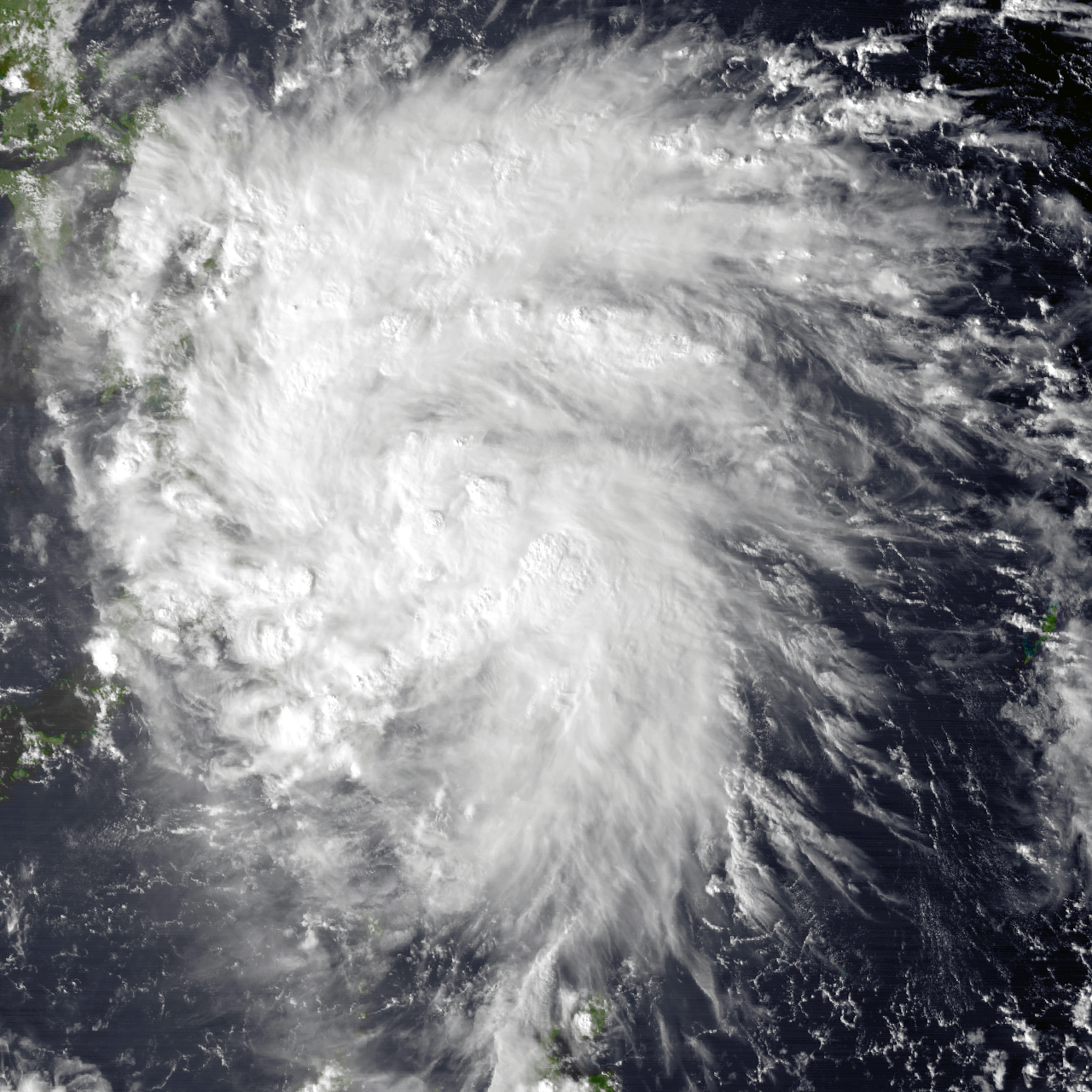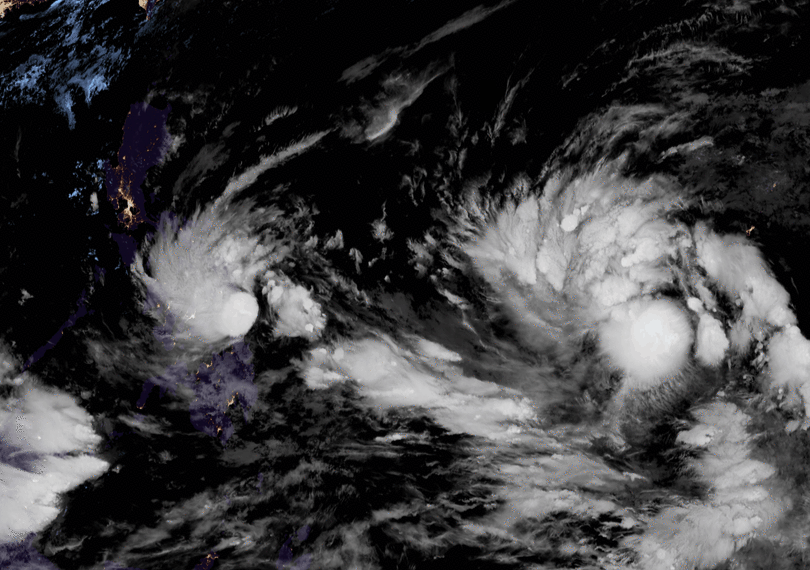|
List Of Storms Named Queenie
The name Queenie has been used for five tropical cyclones in Western Pacific Ocean. As a local name, the name was originally called Quadro in 2002. Named by the United States Armed Services: * Typhoon Queenie (1945) – a minimal typhoon that traversed through Luzon and China. Named by PAGASA in the Philippines: * Typhoon Chebi (2006) (T0620, 23W, Queenie) – struck the northern Philippines * Tropical Storm Sinlaku (2014) (T1421, 22W, Queenie) – struck Philippines and Vietnam * Typhoon Kong-rey (2018) (T1825, 30W, Queenie) – traversed the Ryukyu Islands before making landfall in South Korea * Tropical Storm Banyan (2022) The 2022 Pacific typhoon season was the third consecutive season to have below average tropical cyclone activity, with twenty-five named storms forming. Of the tropical storms, ten became typhoons, and three would intensify into super typhoons. ... (T2223, 27W, Queenie) – remained out at sea. {{DEFAULTSORT:Queenie Pacific typhoon set index articl ... [...More Info...] [...Related Items...] OR: [Wikipedia] [Google] [Baidu] |
Tropical Cyclone
A tropical cyclone is a rapidly rotating storm system with a low-pressure area, a closed low-level atmospheric circulation, strong winds, and a spiral arrangement of thunderstorms that produce heavy rain and squalls. Depending on its location and strength, a tropical cyclone is called a hurricane (), typhoon (), tropical storm, cyclonic storm, tropical depression, or simply cyclone. A hurricane is a strong tropical cyclone that occurs in the Atlantic Ocean or northeastern Pacific Ocean. A typhoon is the same thing which occurs in the northwestern Pacific Ocean. In the Indian Ocean and South Pacific, comparable storms are referred to as "tropical cyclones". In modern times, on average around 80 to 90 named tropical cyclones form each year around the world, over half of which develop hurricane-force winds of or more. Tropical cyclones tropical cyclogenesis, typically form over large bodies of relatively warm water. They derive their energy through the evaporation of water ... [...More Info...] [...Related Items...] OR: [Wikipedia] [Google] [Baidu] |
United States Armed Services
The United States Armed Forces are the military forces of the United States. U.S. federal law names six armed forces: the Army, Marine Corps, Navy, Air Force, Space Force, and the Coast Guard. Since 1949, all of the armed forces, except the Coast Guard, have been permanently part of the United States Department of Defense. They form six of the eight uniformed services of the United States. Each of the different military services is assigned a role and domain. The Army conducts land operations. The Navy and Marine Corps conduct maritime operations, the Marine Corps specializing in amphibious and maritime littoral operations primarily for supporting the Navy. The Air Force conducts air operations. The Space Force conducts space operations. The Coast Guard is unique in that it specializes in maritime operations and is also a law enforcement agency. From their inception during the American Revolutionary War, the Army and the Navy, and later the other services, have played a decis ... [...More Info...] [...Related Items...] OR: [Wikipedia] [Google] [Baidu] |
1945 Pacific Typhoon Season
The 1945 Pacific typhoon season was the first official season to be included in the West Pacific typhoon database. It was also the first season to name storms. It has no official bounds; it ran year-round in 1945, but most tropical cyclones tend to form in the northwestern Pacific Ocean between June and December. These dates conventionally delimit the period of each year when most tropical cyclones form in the northwestern Pacific Ocean. The scope of this article is limited to the Pacific Ocean, north of the equator and west of the International Date Line. Storms that form east of the date line and north of the equator are called hurricanes; see 1945 Pacific hurricane season. Predecessor agency to the Joint Typhoon Warning Center (JTWC), Fleet Weather Center/Typhoon Tracking Center was established on the island of Guam in June 1945, after multiple typhoons, including Typhoon Cobra in the previous season and Typhoon Connie in this season, had caused a significant loss of men ... [...More Info...] [...Related Items...] OR: [Wikipedia] [Google] [Baidu] |
PAGASA
The Philippine Atmospheric, Geophysical and Astronomical Services Administration (, abbreviated as PAGASA , which means "hope" as in the Tagalog language, Tagalog word ''pag-asa'') is the National Meteorological and Hydrological Services (NMHS) agency of the Philippines mandated to provide protection against natural calamities and to ensure the safety, well-being and economic security of all the people, and for the promotion of national progress by undertaking scientific and technological services in meteorology, hydrology, climatology, astronomy and other geophysical sciences. Created on December 8, 1972, by reorganizing the Weather Bureau, PAGASA now serves as one of the Scientific and Technological Services Institutes of the Department of Science and Technology (Philippines), Department of Science and Technology. History The ''Observatorio Meteorológico de Manila'' Formal meteorological and astronomical services in the Philippines began in 1865 with the establishment of ... [...More Info...] [...Related Items...] OR: [Wikipedia] [Google] [Baidu] |
Philippines
The Philippines, officially the Republic of the Philippines, is an Archipelagic state, archipelagic country in Southeast Asia. Located in the western Pacific Ocean, it consists of List of islands of the Philippines, 7,641 islands, with a total area of roughly 300,000 square kilometers, which are broadly categorized in Island groups of the Philippines, three main geographical divisions from north to south: Luzon, Visayas, and Mindanao. With a population of over 110 million, it is the world's List of countries and dependencies by population, twelfth-most-populous country. The Philippines is bounded by the South China Sea to the west, the Philippine Sea to the east, and the Celebes Sea to the south. It shares maritime borders with Taiwan to the north, Japan to the northeast, Palau to the east and southeast, Indonesia to the south, Malaysia to the southwest, Vietnam to the west, and China to the northwest. It has Ethnic groups in the Philippines, diverse ethnicities and Culture o ... [...More Info...] [...Related Items...] OR: [Wikipedia] [Google] [Baidu] |
Typhoon Chebi (2006)
Typhoon Chebi (), known in the Philippines as Super Typhoon Queenie, was a powerful typhoon that impacted Luzon during early November 2006. Chebi is the third typhoon since Typhoon Xangsane to hit the country destructively. The 30th tropical depression developed east of the Mariana Islands on October 31 as a weak disturbance. The system was dubbed into a tropical depression on November 8, until both the JMA and PAGASA upgraded it to a tropical storm on November 9. Chebi rapidly intensified to a Category 4 typhoon the next day and made landfall over northern Philippines on November 11. The system finally dissipated near Hong Kong and Vietnam on November 14. The name Chebi is a misspelling for Jebi and was corrected in 2007, which means swallow in Korean. Meteorological history Preparations and impact Philippines Typhoon Chebi entered the Philippine Area of Responsibility (PAR) on November 10 and was named Queenie by PAGASA. On November 11, just after its peak intensity, Ch ... [...More Info...] [...Related Items...] OR: [Wikipedia] [Google] [Baidu] |
Tropical Storm Sinlaku (2014)
Tropical Storm Sinlaku, known in the Philippines as Tropical Storm Queenie, was a weak tropical cyclone which affected the Philippines and Vietnam in late November 2014. The twenty-first named storm of the annual Pacific typhoon season, Sinlaku formed as a tropical disturbance east of Mindanao on November 25. The disturbance became a tropical depression on the next day while moving westward, before making landfall in northeastern Mindanao. The depression struck multiple islands in Visayas and Palawan on November 27, before emerging into the South China Sea. Early on November 28, the depression became Tropical Storm Sinlaku while turning west-northwest. Sinlaku strengthened slightly and made landfall in south-central Vietnam on the next day. The storm weakened quickly after landfall, and dissipated early on November 30. Sinlaku first affected the Philippines as a tropical depression. PSWS were issued over Mindanao, Visayas, and Palawan. Classes in the regions were suspended in adva ... [...More Info...] [...Related Items...] OR: [Wikipedia] [Google] [Baidu] |
Typhoon Kong-rey (2018)
Typhoon Kong-rey, known in the Philippines as Typhoon Queenie, was a large and powerful typhoon that was tied with Typhoon Yutu as the most powerful tropical cyclone worldwide in 2018. The twenty-fifth tropical storm, eleventh typhoon and 6th super typhoon of the 2018 Pacific typhoon season, Kong-rey originated from a tropical disturbance in the open Pacific. For a couple days, it went westward, organizing into a tropical depression on September 27. Then it intensified into a powerful Category 5 super typhoon early on October 2. Kong-rey underwent an eyewall replacement cycle after its peak intensity, causing it to weaken into a Category 3 typhoon under unfavorable conditions. Kong-rey then struck South Korea on October 6 as a tropical storm. Kong-rey transitioned into an extratropical cyclone later that day while impacting Japan. A total of 3 people were killed by the storm, including 2 people from South Korea. In South Korea, damage nationwide totaled at ₩54.9 billion (US$4 ... [...More Info...] [...Related Items...] OR: [Wikipedia] [Google] [Baidu] |
Tropical Storm Banyan (2022)
The 2022 Pacific typhoon season was the third consecutive season to have below average tropical cyclone activity, with twenty-five named storms forming. Of the tropical storms, ten became typhoons, and three would intensify into super typhoons. The season saw near-average activity by named storm count, although many of the storms were weak and short-lived, particularly towards the end of the season. This low activity was caused by an unusually strong La Niña that had persisted from 2020. The season's first named storm, #Typhoon Malakas (Basyang), Malakas, developed on April 6, while the last named storm, #Tropical Storm Pakhar (Rosal), Pakhar, dissipated on December 12. The season's first typhoon, #Typhoon Malakas (Basyang), Malakas, reached typhoon status on April 12. The season ran throughout 2022, though most tropical cyclones typically tropical cyclogenesis, develop between May and October. Tropical storms Tropical Storm Megi (2022), Megi and Tropical Storm Nalgae, Nalgae we ... [...More Info...] [...Related Items...] OR: [Wikipedia] [Google] [Baidu] |
List Of Storms Named Reming
The name Reming was used for eleven tropical cyclones in the Philippines by the Philippine Atmospheric, Geophysical and Astronomical Services Administration (PAGASA), and its predecessor, the Philippine Weather Bureau, in the Western Pacific Ocean. * Tropical Depression Reming (1964) – a weak system which was only tracked by the Philippine Weather Bureau. * Typhoon Mamie (1968) (T6825, 30W, Reming) – a minimal typhoon that crossed the Philippines and Vietnam. * Tropical Depression Reming (1972) – a short-lived tropical depression which did not cause any damage. * Typhoon Fran (1976) (T7617, 17W, Reming) – a powerful typhoon that made landfall in western Japan and became one of its wettest and most destructive typhoons, killing 169. * Typhoon Norris (1980) (T8012, 13W, Reming) – a relatively strong typhoon that struck Taiwan. * Severe Tropical Storm Warren (1984) (T8423, 26W, Reming) – an erratic system which peaked as a Category 1-equivalent tropical cyclone; sig ... [...More Info...] [...Related Items...] OR: [Wikipedia] [Google] [Baidu] |


